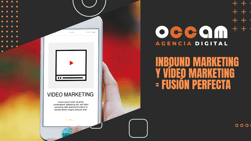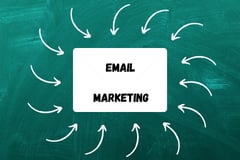Index Content
Automated marketing, also known as marketing automation, is an updated way of carrying out some of the marketing tasks in which part of them are executed autonomously, without human intervention. To do this, digital software must be used as a base platform where data, tasks, publications and the like are dumped so that it can manage, order, publish and analyse them itself.
The incorporation of automation into marketing brings great benefits in terms of efficiency and productivity, partly due to the reduction of possible errors made by human action, the speed with which tasks are carried out, the personalisation of communication and the implementation of new technological tools.
Marketing automation can be applied in (and with) social networks, websites, databases, spreadsheets, emails and, of course, blogs. Here are some marketing automation strategies that you can incorporate into your blog and with which you will obtain great advantages:
How to implement it on your blog
Hubspot is one of the software that can be used to automate your blog and incorporate all the necessary tools to reduce routine tasks. The tasks that can be automated are called workflow, small actions that are chained one after another and that allow different possibilities depending on the customer response. They are as varied as:
- Personalised emails: Personalisation can refer to something as simple as the name of the recipient within a common distribution, such as a newsletter or a notification email, but emails can also be personalised according to the stages of the buyer's journey, their position in the marketing funnel, the number of purchases, etc..
These emails are connected to the databases where your customer information is stored, computerised and automated, which allows you to segment and filter them to separate strategies. This content can be programmed according to customer responses: planned reminders will be sent a few days after the first email, with different content depending on whether the customer's response was positive or not in the first place. For example, did the customer respond to the conversion offered in the previous email? If not, a new email is sent a few days later. Follow-up emails would therefore be another personalisation tool.
- Chatbox: They are the equivalent of the shop assistant who attends to the customer when they enter a shop. They approach the customer offering their help and make their knowledge available to the customer. On the blog, they appear as a small tab that appears a few seconds after the user enters the website. With a written message, they offer the customer the possibility of entering into a direct conversation with the company to request information or resolve doubts. They reduce a large part of the customer service work, as happens with other tools such as FAQs (frequently asked questions). A great advantage of the chatbot is that, unlike a worker, they can be available around the clock, offering personalised help at any time and place.
APPMASTER
However, the most useful thing internally for chatbots is that, once the conversation has started, they are offered some way to provide their data and thus become leads. However, they should be segmented in the database as leads that have accessed through the chatbot to personalise the communication strategy.
- Statistics: Blogs offer internal data-counting tools that are useful for evaluating the status of the page. They count frequencies such as the number of visits (to the website and the different sections), the time spent on each screen, whether users respond to conversions, bounce rates, the number of contacts created in a day... At the same time, they offer an analysis of the company's internal productivity, counting, for example, the number of calls, tasks solved, emails sent, meetings...
- Landing pages: Blogs can include so-called landing pages or landing pages. These are pages that are accessed through a link that can be inside the website itself, but can also be reached through an external place, such as a QR or a link beyond the website. They are usually created in the context of a page that increases ROI. They are used in the conversion phase, to attract customers to the website, so they automate the task of attracting customers, improving the number of prospects on your website.
Marketing automation is, therefore, one more step in the evolution of marketing that constantly seeks to be more efficient and resolute. Implementing some of these tips to your blog will increase your conversions and your leads, as well as improve the productivity and efficiency of your blog.





